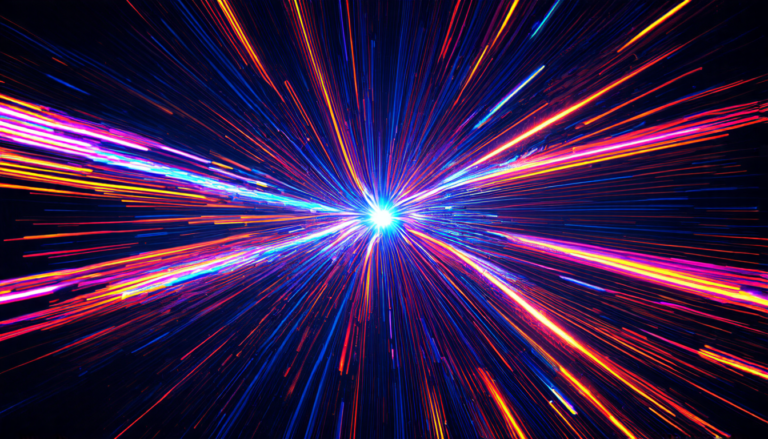Sunday 13 April 2025
The Silicon Tracking System (STS) is a cutting-edge technology that’s about to revolutionize the way we detect and track charged particles in high-energy physics experiments. This system, currently under development for the Compressed Baryonic Matter (CBM) experiment at the Facility for Antiproton and Ion Research (FAIR), promises to deliver unprecedented precision and speed in tracking particle collisions.
At its core, the STS is a sophisticated detector that uses silicon microstrip sensors to measure the position and time of charged particles as they collide with other particles or targets. Each sensor is made up of multiple strips, which are read out by custom-designed front-end electronics that can process data at incredibly high speeds. The system is designed to operate in extremely dense environments, where thousands of particles may be colliding simultaneously.
The STS’s capabilities are truly impressive. It can measure the position of particles with an accuracy of just a few micrometers, and it can do so at rates of up to 10 MHz per centimeter squared – a staggering increase over previous tracking systems. This means that researchers will be able to reconstruct particle collisions in incredibly fine detail, allowing them to gain new insights into the fundamental nature of matter.
One of the key challenges facing the STS development team was designing an electronics system that could keep up with the sheer volume of data generated by these high-rate collisions. To address this issue, they developed a custom ASIC (Application-Specific Integrated Circuit) called SMX, which can process data from 128 sensor strips simultaneously. This allows the STS to operate in real-time, without the need for extensive post-processing.
Another critical aspect of the STS is its mechanical design. The system consists of multiple modules, each containing a silicon sensor and associated electronics. These modules are arranged in a specific pattern to ensure optimal tracking performance, with overlapping layers allowing researchers to reconstruct particle trajectories with high accuracy.
The STS has already undergone extensive testing at the SIS18 accelerator at GSI, Germany, where it was used to track collisions between oxygen ions and nitrogen nuclei. The results were impressive: the system demonstrated excellent tracking performance, even in the most challenging conditions.
The CBM experiment, which will be the first major user of the STS, aims to study the properties of dense nuclear matter by colliding heavy ions at extremely high energies.
Cite this article: “Revolutionizing Particle Tracking: Breakthrough in Silicon Detector Technology Enables High-Precision Reconstruction of Cosmic Events”, The Science Archive, 2025.
High-Energy Physics, Particle Tracking, Silicon Microstrip Sensors, Compressed Baryonic Matter Experiment, Facility For Antiproton And Ion Research, Fair, Cbm Experiment, Asic, Application-Specific Integrated Circuit, Smx, Sis







